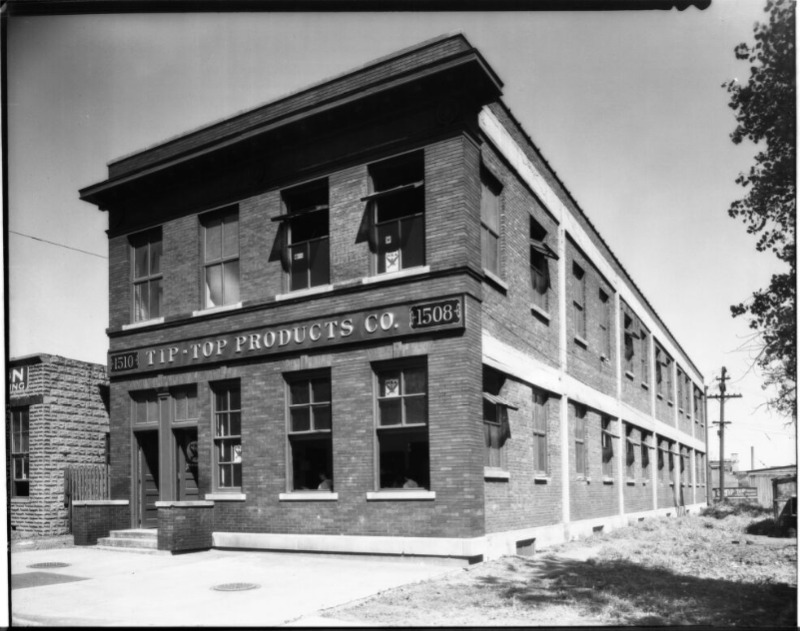Tip-Top Products
Tip-Top Products Company was originally founded in 1924 by a Mr. Carl Renstrom to manufacture and sell beauty products. The company quickly moved in 1927 to 1515 Cuming Street, taking over a factory initially built for Ford Motor Companies. The business quickly became a massive success following the patent and release of the first metal hair curler dubbed the Tip Top Easy Curler. By 1964, the company owned twenty four original patent designs that were being produced and exported across the United States rapidly. (DCHS, 2009)
Perhaps one of the most successful products from the company was a product called liquid solder, which was a binding agent that worked on metal without needing to apply heat to have a solid junction. This product alone financed the remainder of Tip-Top’s time as an independent company, and systematically exposed consumers to industrial lead. Initially there were toxic biproducts present in the soldering solution itself, making exposure to human skin potentially dangerous. Within the packaging elements of this product and others offered by Tip-Top lead was used to prevent seals from cracking and provided products with additional protection while in transit (DCHS, 2009).
Tip-Top Products Company was not deterred from pursuing less-traditional markets, and had an extensive manufacturing relationship with the United States Armed Forces to produce aluminum-made goods during WWII. Tip-Top manufactured barbed wire, cable reels, and even anti-personnel mines. These products were sealed with industrial lead to prevent damage or corrosion, exposing soldiers to industrial lead upon opening Tip-Top packaging and handling items. (DCHS, 2009).
A compounding and frustrating element to studying Tip-Top Products Company is its elusive history. Renstrom had founded the company and sold it within forty years, well before EPA scrutiny and regulation had successfully permeated the bubble around Omaha’s industrial lead problem corporate interest had created. Tip-Top was bought out by Rayette Company in 1964 for $25 million dollars, and was rebranded immediately to Faberge. The only remaining memento of Tip-Top was its original factory building which had be converted into apartments by the 1980s (OWH, 1981). Even the original factory building was demolished in 2010, leaving no physical legacy to connect Omaha to this relic of the past. It feels very much like Tip-Top was never even present in the local community, there’s nothing to anchor these memories to Omaha with.
This situation is both unfortunate and unfair to the locals of Omaha, who may never understand the full scope of risks presented by the company and its products. Tip-Top avoided much of the public scrutiny and backlash that followed businesses with prolific usages of industrial lead. The original company owner went on to retire and pursue his passions as he pleased, without any sort of documented fiscal punishment for exposing customers to industrial lead.
This lack of justice is amplified further considering Omaha was responsible for the preliminary success Renstrom experienced, and there was no meaningful effort to compensate victims of industrial lead. When Renstrom was bought out, facilities and production moved across state lines to Minnesota, which admittedly may make awareness of this company as a local actor a legitimate issue. Although the memory of Tip-Top Products maybe faint even in the local narrative, the reach of its products across North America would not have been possible without the citizens of Omaha interacting unknowingly with industrial lead. The massive success of Tip-Top would not have been possible without first debuting in Omaha (DCHS, 2009)
